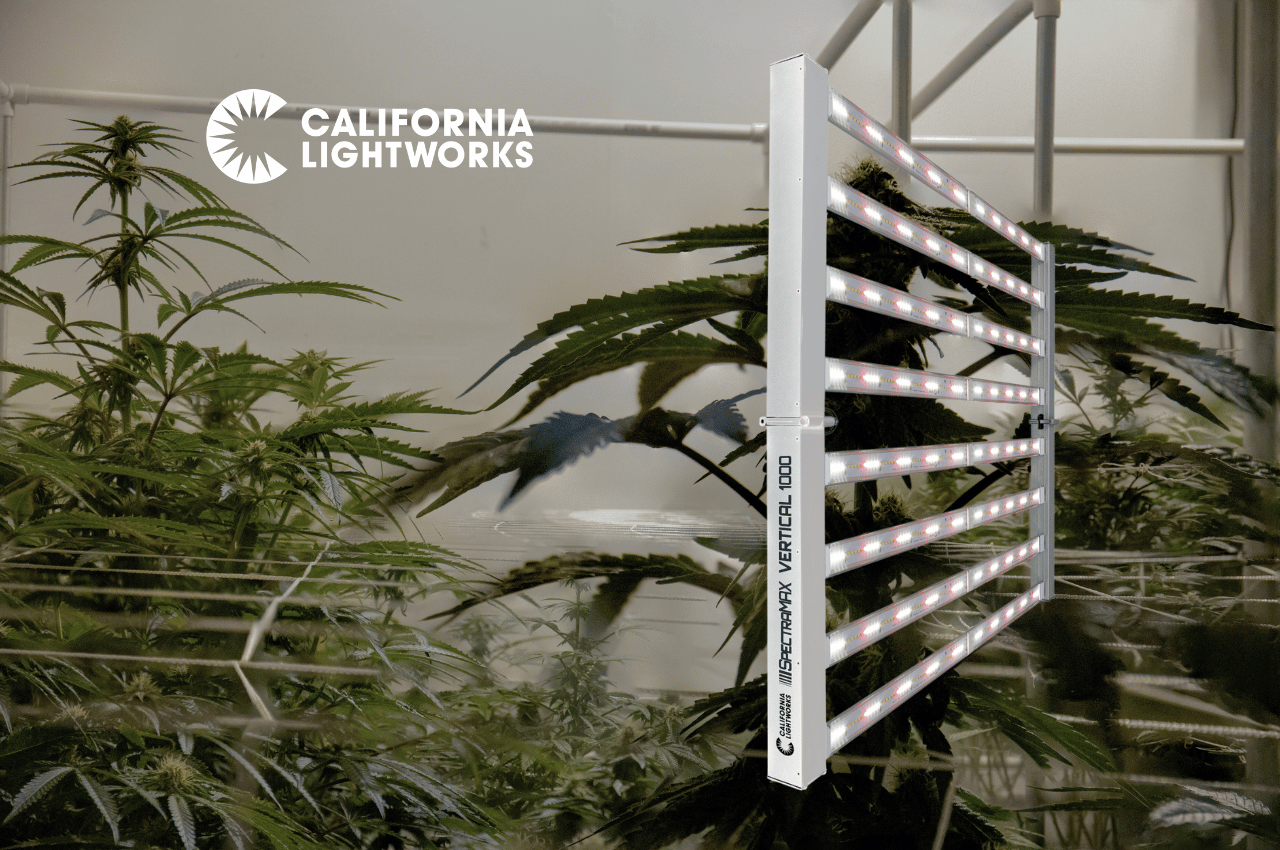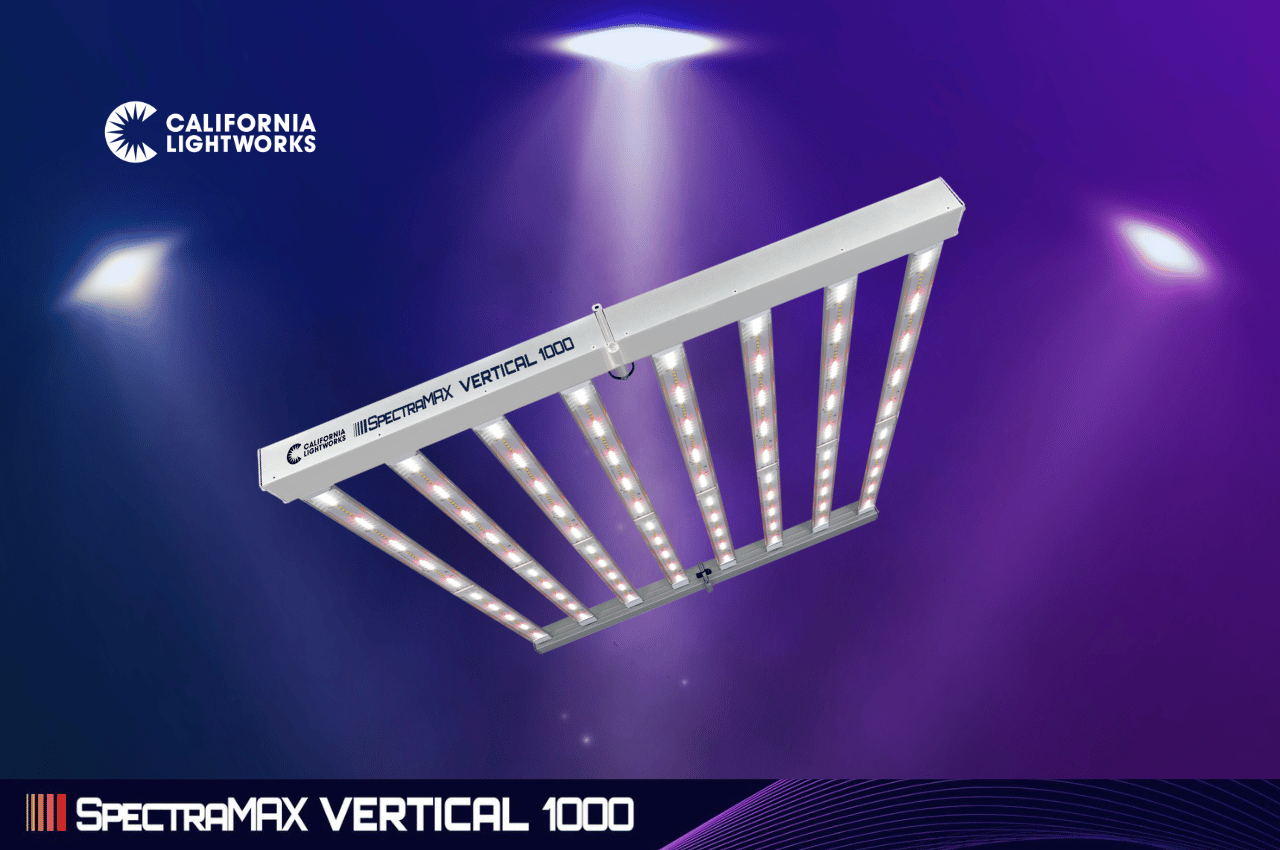Whether you’re new to growing or you’re just new to LED lighting, this fast-advancing technology might have your mind reeling. To make the most of LEDs, you have to understand LED grow light intensity and coverage. And even experienced HID growers have a bit of a learning curve when it comes to LED lighting metrics.
You see, HID grow lights come with a fairly basic of rules to define “quality light.” When selecting HPS and MH bulbs, high wattage automatically means high intensity. You follow a set formula for the watts needed to cover a grow area, and select your lights accordingly.
LED grow lights are more complicated for one simple reason:
They’re more efficient.
Top-tier LED lights require less energy to produce the same intensity of light. Not only that, they also emit the exact color spectrum your plants need and focus those photons directly onto the canopy. This eliminates waste, ensuring you only consume as much energy as you need for your crop.
This efficacy is good for your budget and the environment. Suffice to say, it’s worth the time it takes to understand LED grow light intensity and coverage. We’ll walk you through everything you need to know in clear and simple language.
What LED Grow Light Intensity Really Means
When we talk about light intensity, we’re referring to the amount or strength of light produced.
With that in mind, let’s clear up one of the greatest misconceptions about grow light intensity.
Watts do not equal intensity. A watt is simply a measurement of electric power. It tells you the amount of energy your lights require in order to operate.
The only reason growers associate watts with light intensity is because all HID bulbs are fairly uniform in terms of wattage. There is a pretty consistent wattage input to lumen output ratio for HPS and MH grow lights.
This is not the case with LED lights. Not only are quality LEDs far more efficient than HIDs, but there is a wide range of efficacy among LED grow lamps. A quality 300-watt LED luminaire produces greater light intensity and higher quality light output than a cheap LED grow light of the same wattage.
In order to make sense of LED grow light intensity and coverage, you need to get familiar with different metrics. This may feel like a lot at first but stick with us. We’re going to take this step by step.
Understanding the Metrics of LED Grow Light Intensity and Coverage
When you research different LED lights, there are certain metrics you should look for. As we said before, watts are not relevant for determining the intensity or coverage of LEDs. Don’t worry about lumens, either. Lumens simply refer to the visual brightness of a light; it has nothing to do with how well your plants can use that light.
Here are the metrics that do matter when determining the intensity of an LED grow light.
PAR
Grow light manufacturers engineer LED lights to provide a high intensity of usable light. We refer to this usable light as photosynthetically active radiation or PAR.
You see, your plants only use certain wavelengths for photosynthesis. These wavelengths all fall within the visible light range of 400-700nm. As a grower, your greatest concern should not be the amount of light your grow light produces, but the amount of light within the PAR range. Anything outside the range is useless to your plants.
PAR is measured in micromoles. If you want to do a deep dive into micromoles, you can learn more about LED metrics here.
Coverage Area
Every LED grow light you consider should have information regarding the lamp’s footprint. This refers to the coverage area—the square footage of canopy that will fall under the beam of the luminaire.
Now, the footprint is important for determining how many and which lights you need for your grow room or tent. But there is also an important correlation between LED grow light intensity and coverage area.
This correlation is referred to as the inverse square law of light. We’ll spare you the complicated formulas and just cut to the chase: The farther an object is from the light source, the less intense the light is when it reaches that object. And light intensity drops off fast.
Let’s say you have a lamp hanging at a 1-foot distance from your canopy. Then, you increase the hanging height to a distance of 2 feet. You will now have a light intensity that is ¼ of what it was before. Major difference, right?
This is why the coverage area is essential. Not only do the size and lenses of your LED grow light determine your coverage area, but so does hanging height. The greater the distance between your lights and canopy, the larger the footprint . . . but the lower the light intensity.
This is why it’s very important to pay attention to hanging heights and coverage area when selecting a light. These metrics tell you the conditions under which your plants receive the advertised. PPFD.
And what is PPFD? Glad you asked.
PPFD
Thanks to the inverse square law, it simply isn’t enough to just know how much PAR your grow lights produce. PAR only tells you how many usable photons your LED light emits. The amount of PAR that actually reaches your plants . . . that’s a whole other measurement.
PPFD stands for photosynthetic photon flux density. Your LED grow light’s PPFD metrics tell you the number of PAR photons reaching your canopy each second. This metric is expressed as micromoles per square meter per second (or umol/m²/s).
So what’s a good PPFD number? It depends on what you grow. Different plants have different needs. Many flowering plants, for example, prefer 300—600 umols for vegetative growth and 800—1,000 umols in the flowering stage.
Uniformity in LED Grow Light Intensity and Coverage
Now that we have a better grip on LED light intensity, let’s talk a little more about your coverage area.
LED grow light intensity and coverage are related not just through hanging heights, but also through light spread. Depending on the specific LED lamp, you could experience a decrease in light intensity at the outer edges of the footprint. This is why it’s so important to do your due diligence when choosing the best LED grow light.
Let’s say, for example, that you need a grow light to cover a 5’ x 5’ canopy. You find an LED lamp with a 5’ x 5’ footprint and a PPFD that falls within the ideal range for your crop. But then after a few weeks, you notice that the plants directly under your light are thriving, while those at the edges look a little weaker.
The problem is that the PPFD provided by the manufacturer only measured photons reaching a surface directly below the lamp. The manufacturer neglected to inform you that their product does not achieve an even light spread.
When evaluating LED grow light intensity and coverage, pay close attention to uniformity. Request a PPFD map from the manufacturer. This map shows PAR measurements for various hanging heights and across surface areas. PPFD maps make it easier for you to compare LED grow lights and determine how many lights you actually need.
Light Intensity and Efficacy
As we previously mentioned, wattage is not a clear indication of LED light intensity because LED lights vary inefficiency. While HID efficacy is fixed, LED lights consistently advance to achieve greater intensity for less energy input.
This is why high quality LED grow lights are astoundingly cost-effective in the long run. In addition to boasting a much longer life span, LED lights provide greater intensity at about half the energy expense.
If you’ve ever used HID grow lights, you know that achieving an even spread of light requires the use of reflectors. This is another area where LED grow lights simplify your grow operation. Quality LEDs are made to spread light with uniform intensity. All light is directed down onto the canopy, so there’s less need to bounce lost light back to your plants.
This is why we say it’s more than worth it to work at understanding LED grow light intensity and coverage. You stand to save significant money on your cultivation process, and you can enjoy higher yields and a better product.
If there’s anything we can do at California Lightworks to help you determine which LED grow lights are right for you, please reach out. We’ll talk through the needs of your specific grow space and help you calculate the benefits of using leading LED technology.







